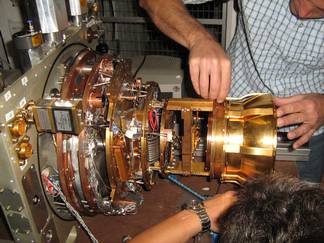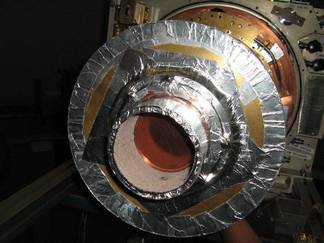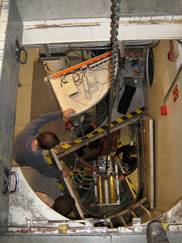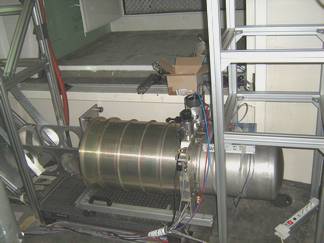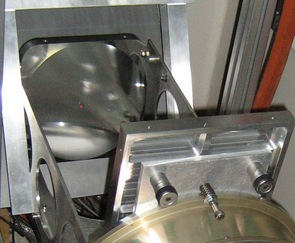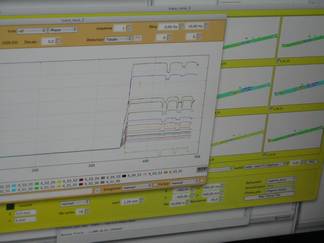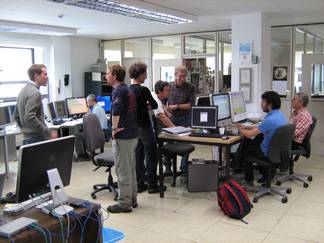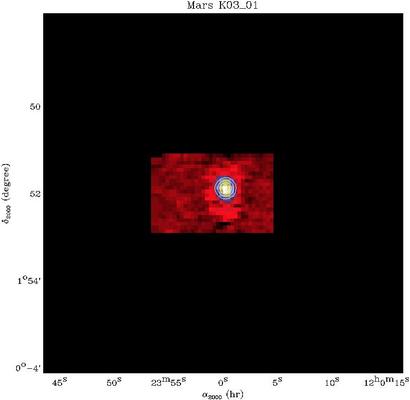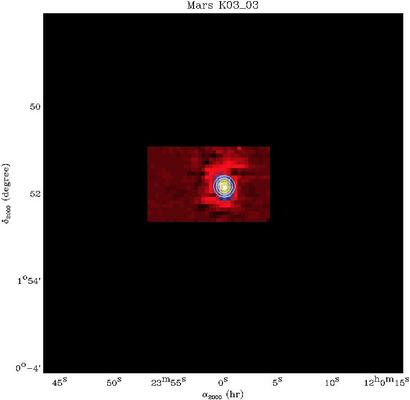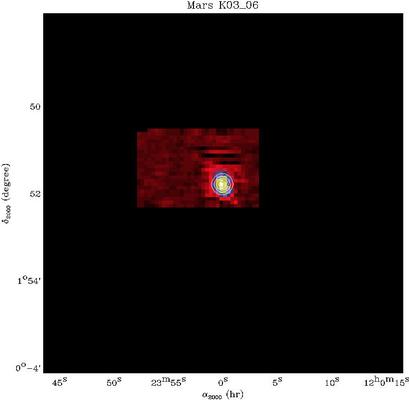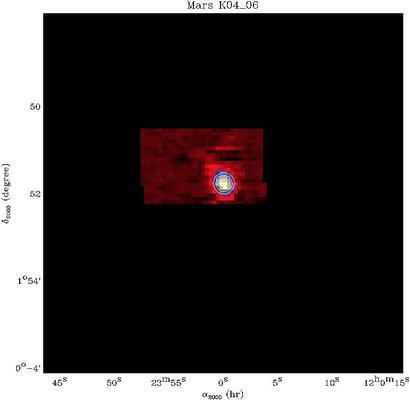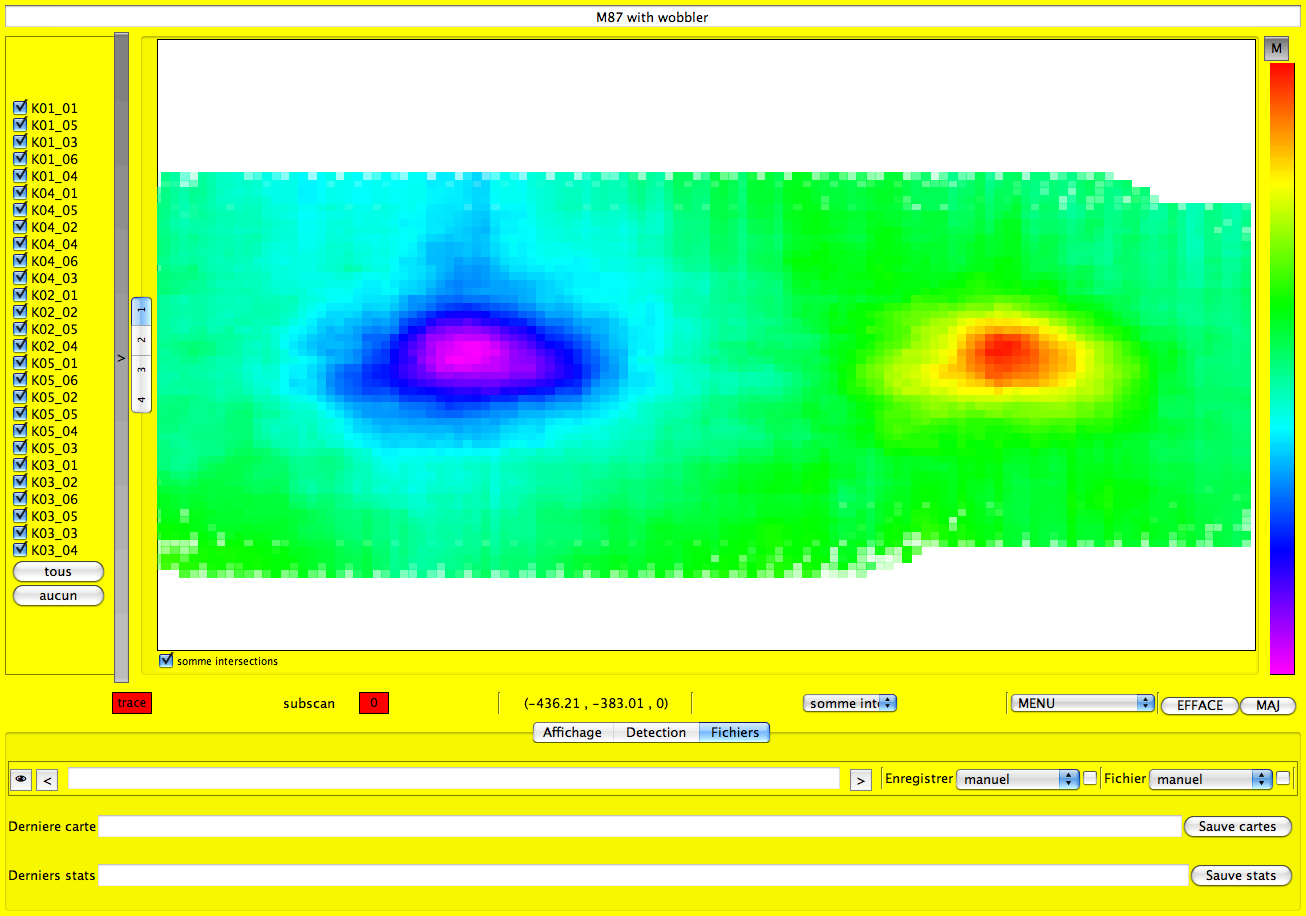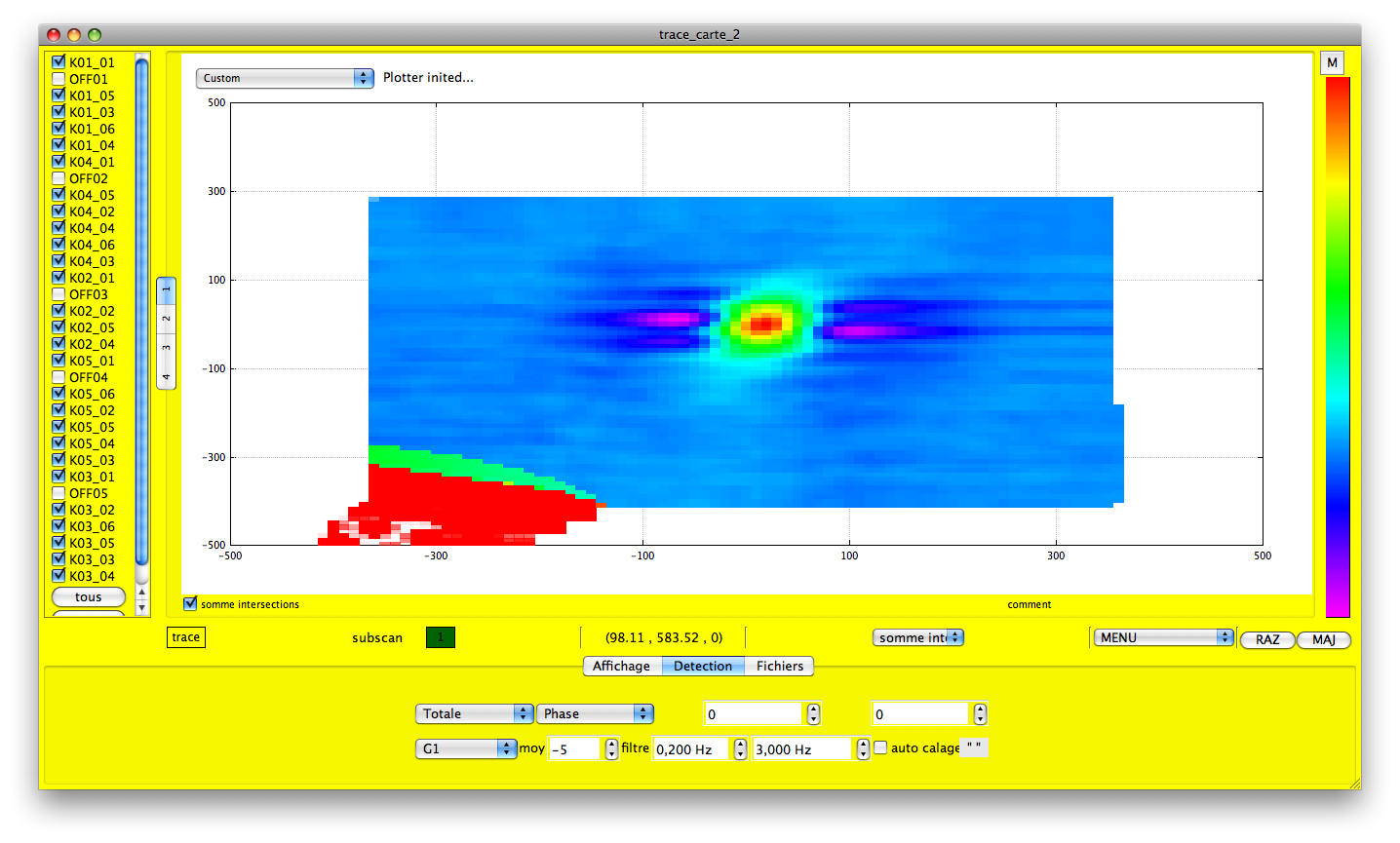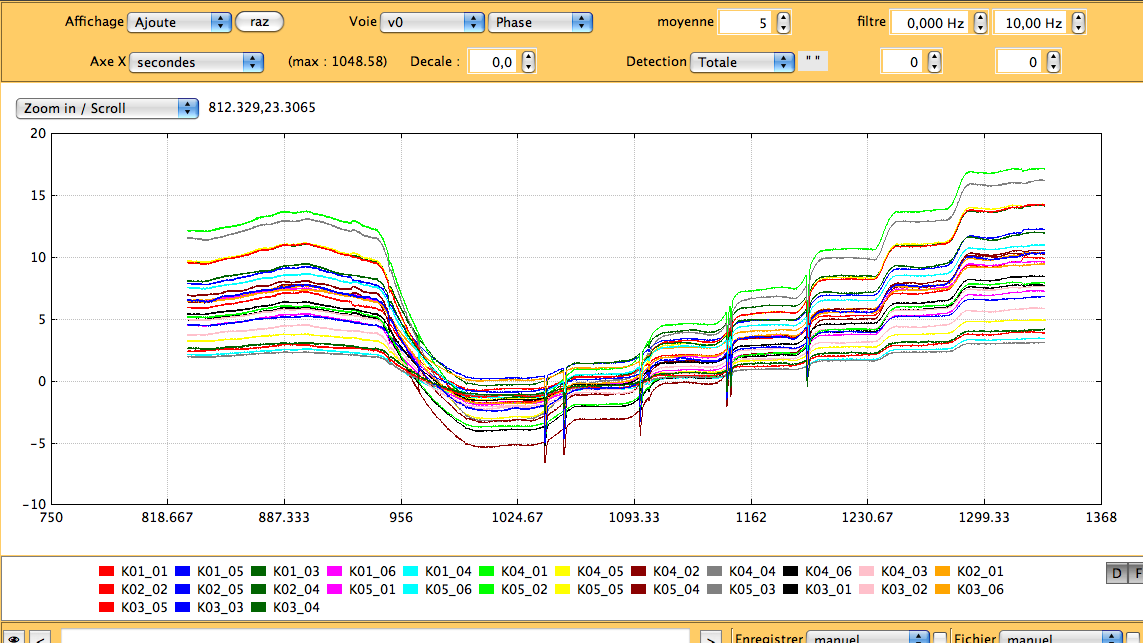NIKA run #1 (14. - 27. Oct 2009, week 42)
Test run plan: 16.10. - 27.10.2009
# |
Dates |
Main Task |
Details |
Lead (IRAM/Neel) |
Support |
|
15.10. |
|
Arrival of first visitors in Granada |
|
|
|
16.10. |
store, computer/network |
Arrival of truck |
Clemens/Alain |
Walter |
|
17.10. Saturday |
Installation, Start of cool down |
Limited access to Rx-Cabin: 3hours |
Clemens/Alain |
Dave, Walter |
|
18.10. Sunday |
Cool down |
Limited access to Rx-Cabin: 1hour |
Clemens/Alain |
Albrecht+Dave on standby |
|
19.10. Monday |
1st optical alignment |
Limited access to Rx-Cabin: 1hour |
Clemens/Alain |
Santiago+Dave |
|
20.10. Tuesday |
Full alignment (incl. removal of M3) T16-09 |
|
Samuel/Alain |
Santiago+Dave |
|
21.10. Wednesday |
Daytime observations T16-09 |
|
Operators/Alain |
Christof (AoD) |
|
22.10. Thursday |
Daytime observations T16-09 |
|
Juan and Operators/Alain |
Christof (AoD) |
|
23.10. Friday |
No observations |
1-2hours to realign NIKA |
|
|
|
24.10.-27.10. |
Daytime observations T16-09 |
|
Juan and Operators/Alain |
Albrecht (AoD) + Markus |
|
28.10. |
Dismounting during maintenance time and Transport back to Grenoble |
|
Operators/Alain, Markus |
|
Staffing of the test run
Detailed staffing plan(updated 14 Oct 2009) More logistic information and test plan (updated 14 Oct 2009)
- Visitors from Neel, LAOG, AIG Cardiff, SRON Utrecht, Groningen: Upto 8 can stay at the Pico (4 rooms reserved), the others stay in Hotel Kenia in the ski station Pradollano. (There are 14 rooms at the PV.)
- IRAM/Granada:
- Operators:
-20.10.: Kike & Victor
20.-27.10.: Juan Luis & Manolo
- Astronomers of Duty:
- 16.-23.10.: Christof Buchbender
- 23.-27.10.: Albrecht Sievers
- Receiver group: Dave John, Santiago Navarro
- Computer group: Walter Brunswig, Albrecht Sievers
- Operators:
- IRAM/Grenoble: Samuel Leclercq + Markus Roesch
Technical issues
- traditional MAMBO observing mode is OK (wobblerswitching on-the-fly), See mail of A.Monfardini (6.3.2009)
- Sufficient He needs to be ordered (SN)
- data acquisition, synchronization. discussion between W.Brunswig and A.Benoit (see WB's mail from 6.6.2009)
Scientific results
NIKA: A millimeter-wave kinetic inductance camera A Monfardini, L J Swenson, A Bideaud, F X Desert, S J C Yates, A Benoit, A M Baryshev et al, 2010, A&A 521, A29 (2010)
Detailed source by source measurements with the offline processing
Daily reports
16.10. Friday
Arrival of the NIKA truck at the telescope. Installation in the the room of the spiral cable holder (base of the telescope ~15m below the receiver cabin): mount the SRON detectors, close the cryostat, and pump it. Install the NIKA computers, configure the network. Test the electronics. No leaks; leaving pumping overnight in any case.
17.10. Saturday
Lift the cryostat, 3 helium bottles, and the pumping unit into the receiver cabin. Install NIKA on the bolometer antivibration table, and attach its mirrors. Mount the electronic tower (up/down converter, RF/IF amplifiers, PCs), plug the Bonn electronics. Check the orientation of the 90deg Hybrid (with spectrum analyzer). Install the ethernet controlled cryostat/thermometers stuff. Fill the trap with nitrogen. Put the Helium transfer line in place and leaving the cabin. Purge the dilution for 2 hours (remotely). Start cooling down (remotely) at 17h. Work on the acquisition software and interfacing with the informations broadcast by the telescope control system. 2 hours of the telescope time were utilized for the installation. Started the condensation of the 3He/4He in the mixing chamber at 0h30.
18.10. Sunday
The cryostat is cold: 80 mK have been reached. Electrical checks: the detectors are alive. WE HAVE THE RESONANCES !! Work on the acquisition software, data processing, merging with the telescope fits files, and the different coordinate system to recover the correct position of the pixels on the sky.
19.10. Monday
Alignment with the lazer: Dismount M3 to use the lazer mounted on the elevation axis, move the cryostat so that the Lazer points both the center of the M7 curved mirror in front of the cryostat and the entrance window of the cryostat. This operation ensure M7 does the image of the subreflector M2 just behind the entrance window, so that the cold pupil is correctly illuminated. Incidentally this procedure ensure also that the cryostat and its mirrors are correctly aligned on the optical axis. Leave the cabin and perform a scan on Venus to check the detectors see the sky, and do the alignment on the sky. Venus appears clearly on the data. Some (2 to 4 over 42) pixels have their frequency resonance mixed (maybe due to magnetic field environment during cool down .. but to be confirmed), try a scan on the quasar 3C 273. 2 hours of the telescope time were used for the alignment and the first light on Venus. Work on the data processing. Most of the pixels were a bit off-resonance.
20.10. Tuesday
Use part of the telescope then NIKA scheduled technical time to repeat observations on Venus with better tuned pixels. Unfortunately the weather degraded, and the wind strength obliged to stop observations in the middle of the afternoon. Use the dead time to work on the data processing.
21.10. Wednesday
It snowed during the night, the wind is gone, the fog leaves the telescope and allow to start observations, though the tau is pretty bad (~ 7mm pwv). Scans on Mars, improve the focus (best value -2.5mm, FWHM around 16arc-sec). At noon we do a scan on 3C 273: it appears clearly even on the raw data (raw time domain trace) !
We point 3C279 (should be a factor of two fainter than 3C273, at about 6-8Jy) and see it too. The weather degrades in the afternoon. We decide that it's not possible to try an extended source. Signal for Mars around 3-5deg in phase. Detectors noise measured to be around 6-10mdeg at 1Hz. Less densitive pixels are also lower noise. We then estimate very roughly an NET of about 100mK per sqrt(Hz) at 1Hz and per pixel. Big uncertainties are allowed among us hopefully. A factor of two easily. Probably in the good direction, but not necessarily.
22.10. Thursday
Until 16h rain and thick clouds. From 16h to 20h observations .... list of sources 3C345, (including a slightly extended galactic source)..... well detected in the period 18h-20h (good weather finally). ....TO BE UPDATED.... Sensitivity rough estimations ongoing. Not too bad in any case. Surely not worse then we had seen/estimated in Grenoble. So we are happy despite the weather. At 20h we start heating up the cryostat (fast procedure). 22h. Champagne after dinner.
23.10. Friday
At 0h we step into the cabin to move the cryostat and all the electronics out of the beam. During the night (working in the cabin, far from the beam) we open up the cryostat and change the array to mount the 30 pixels LEKIDs NICA 3.3 (40nm film evaporated in Institut Néel). Fixed a leak on the dilution pumping system. Cryostat is closed and pumping again at 4h. We leave pumping. At 7h we go again into the cabin to put the cryostat and the new electronics (UP/DOWN converter at 1.5GHz) in place. Very rough alignement. We connect the helium dewar and it's time to leave the cabin for observations at 8h. At 9h15 we start cooling down remotely. Need to align again with IRAM laser and to upload 3 new helium dewars in the cabin. Two or three empty should go down. Alignment and dewar movements during 1-2 hours of T09-09 time in the afternoon (clarified with HU & CK). OK, the alignment is done. At around 13h the cryostat is cold and we see the resonances !!
First rough reduction of 160 by 100 arcsec. AzEl maps of Mars (map center is arbitrary, labels are wrong) taken on 21/10/2009. Note the error beam outside the main Gaussian beam (white contours). S/N is 1000 for one scan. Colour scale is in Jy/beam
24.10. Saturday
We start at 8am the observations on Mars. LEKIDs see light !! We see clearly the PSF halo around the main peak in the raw data. Tau=0.3. Changed focus on the telescope to -3mm. Signal on Mars at the peak of 10-14 deg; noise around 5-10mdeg/sqrt(Hz) at 1Hz more or less as measured in Grenoble. Monochromatic noise related to Bonn electronics (at 1.5Hz when Bonn is 5Hz, 0.9Hz when Bonn at 4Hz). Completely correlated on the pixels and monochromatic but still annoying. In any case S/N on Mars is around 1,000 per sqrt(Hz) per pixel. So it means 25mK if we consider that Mars is 25K (to be confirmed ... 7arc-sec of 200K diluted into a 16arc-sec FWHM beam). On the beam we count a factor of 4 (4 pixels on the beam), so it should mean something around 12mK per sqrt(Hz) at 1Hz. Still quite a way to go for the final instrument (the easy factor to remember is "an order of magnitude"), but at least is of the same order we had measured in the lab. We are all positive and confident that it can be done for both the arrays. In the afternoon, we integrate for 50 minutes on the field of GRB091024 without seeing any clear source. We will calculate an upper limit of detection and publish a GCN.
25.10. Sunday
Switch to FPGA Grenoble electronics. It's working too !! We go for fainter sources. Detected 200mJy point-like in a couple of minutes. In the evening, we image the Moon. See clearly some details of the surface. Of course very difficult to de-correlate and make a real image, but seen details on individual pixels on the raw time-domain data.
26.10. Monday
Starting the tests in Wobbling mode. So far we have been using the total power zig-zag scans only. It works, imaged Mars. For the remaining part of the day, mixed software and electronics problems limited our observations. We finally solve them during the night, so we are ready for a great last day. The cryostat seems working very well, remaining still around 80-85mK.
27.10. Tuesday
Last day of observations. We are all very positives about what we can get today. The configuration is still the LEKIDs array with the Neel FPGA electronics. We check first the system on Mars, to be sure the problems have been solved. The resonances are finally nice and stables. They are in fact. MArs is well imaged with total power AND wobbler. Signal is still solid 10deg in phase on some pixels. 5deg average on all the pixels. Noise is again good, in both modes. We go for a long integration of M82. Nothing obviuos appears on the quick look map, but we should have detected it. We will see off-line. We go then for M87 and see clearly it in the first scan already. First integration in wobbler mode. Signal at the center is around 10mdeg. We clearly see the shape of the galaxy !!! We plan then to go for a total power scan to see one of the jets coming out from M87. Congratulations!! (CK)
In the pictures. Top: M87 with wobbler (positive and negative sides). Bottom: G34.3 total power.
At around 18h30 we have taken a 1.1 to 1.8 airmasses skydip (shown below). The steps are of course at constant elevation and they are more or less of constant size, showing a first order linearity. (FXD) To explain better (we reckon it was not 100% clear from the picture): the left part of the picture is just a fast slew to the first "almost zenith" position from the original EL=40deg. Then we stepped down with the signal in phase going up in steps from airmass=1.1 to airmass=1.8 (constant airmass steps). The glitches between the first few steps is due to main motors switching on/off. Later, we should compare the derived tau with the taumeter value. (CK)
|
28.10. Wednesday
We pack everything and crane down the cryostat and pumping system. At noon, the truck is ready to leave. We decide to have our last lunch at the 30-m excellent restaurant. At 14h30 we leave: Alain and Philippe by bicycle, Aurelien, Xavier and Alessandro by truck. Loren and Markus with the IRAM shuttle. Rendez-vous at Cenes de Vega at 15h. The bicycles on the truck; Philippe and Alessandro heading directly to Grenoble.
29.10. Thursday
At 6h30, after 15 hours drive and a number of coffees, we finally enter the CNRS gate in Grenoble. Three hours to unload the truck, fix the administrative stuff and have a coffee "chez nous" at the third floor. The technicians that participated in the development of the cryostat and the electronics are informed about the success of the first NIKA campaign.
We can now relax until monday !!

